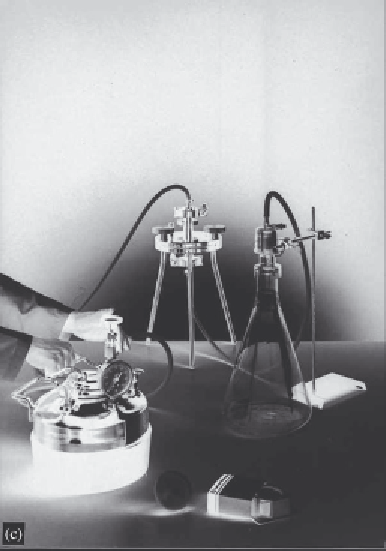Biomedical Engineering Reference
In-Depth Information
Figure 6.24
(
Continued
)
6.9.4 Freeze-drying
Freeze drying (lyophilization) refers to the removal of solvent directly from a solution while in
the frozen state. Removal of water directly from (frozen) biopharmaceutical products via lyophi-
lization yields a powdered product, usually displaying a water content of the order of 3 per cent.
In general, removal of the solvent water from such products greatly reduces the likelihood of
chemical/biological-mediated inactivation of the biopharmaceutical. Freeze-dried biopharmaceu-
tical products usually exhibit longer shelf lives than products sold in solution. Freeze-drying is
also recognized by the regulatory authorities as being a safe and accep
table
method of preserving
many parenteral products.
Freeze-drying is a relatively gentle way of removing water from proteins in solution. However,
this process can promote the inactivation of some protein types, and specifi c excipients (cryopro-
tectants) are usually added to the product in order to minimize such inactivation. Commonly used
cryoprotectants include carbohydrates (such as glucose and sucrose), proteins (such as HSA), and
amino acids (such as lysine, arginine or glutamic acid). Alcohols/polyols have also found some
application as cryoprotectants.
The freeze-drying process is initiated by the freezing of the biopharmaceutical product in its
fi nal product containers. As the temperature is decreased, ice crystals begin to form and grow. This
results in an effective concentration of all the solutes present in the remaining liquid phase, includ-
ing the protein and all added excipients. For example, the concentration of salts may increase to

Search WWH ::

Custom Search